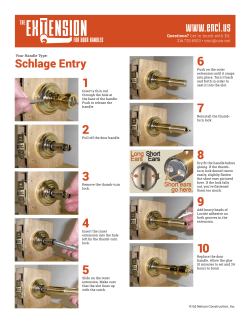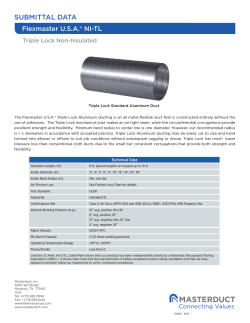
Glossary of VnmrJ Commands
Glossary of Common NMR Commands and Terms
aa
abort acquisition, hard stop
acqi
Open acqi window if the button has been lost
ai
absolute intensity mode
alock
autolocking routine, alock=’y’ for autolocking, alock=’n’ for typical
manual locking
aph
autophasing, not recommended for most spectra
array
macro for setting up an arrayed experiment
at
points (np)
acquisition time, set by spectral width (sw) and number of data
axis='p'
axis=’pd’
specify ppm or hertz for the axis, i.e. axis='p' or axis='h', use
referencing in an indirect detect experiment with >decref
BPsvf
BioPack save file command: saves all pieces associated with an
Experiment including any shape pulses, global file, probe file, etc.
Usage: >BPsvf(‘filename’)
bc
baseline correct
bs
block size, data is stored to the disk every time an increment of bs
is reached, i.e. bs=16, every 16 scans data is saved and can be
transformed
cd
directory
change directory, changes the directory back to home default
cexp(#)
create the experiment #
COSY
correlation spectroscopy, a 2-D experiment, homonuclear one-bond
J coupling
center
re-size a 2-D spectrum to a centered square, same as [DispMenu]
[Size][Center]
ct
completed transients
cz
clear all integral reset points
d1
seconds
delay time between scans, required to allow for T1 relaxation, in
da
display arrays
dc
drift correct
dconi
display interactive color map (2-D)
df
display FID
dfrq
decoupler frequency (2nd channel)
dg
display first text screen of parameters
dli
display list of integrals
dm
decoupler mode
dmf
decoupler modulation frequency
dmm
decoupler modulation mode (c, g or w)
dn
decoupler nucleus (2nd channel)
dof
decoupler offset (Channel 2 transmitter offset) in Hertz
dp
double precision, set to 'y'
dpcon
display contours in 2-D spectra
dpf
display peak frequencies
dpir
display integrals on screen (requires vp=12)
dps
display pulse sequence
dpwr
decoupler power
dres
display digitial resolution
ds
display spectrum
dscale
display the scale (in ppm or Hertz)
dsn
display signal to noise
dss
display stacked spectra
dssa
display stacked spectra automatically
dssh
display a series of spectra in an arrayed experiment
dssl
display corresponding numbers in arrayed experiment
explib
display experiment library (or list of current exps.)
f
display the whole spectrum
fb
filter bandwidth
fn/fn1
Fourier number for direct (fn) detected dimension, indirect (fn1)
foldt
fold COSY type spectrum along diagonal
ft
fourier transform the data (no weighting functions)
full
display over the whole screen
fullt
re-size a 2-D spectrum for full with traces, same as
[DispMenu][Size][Full with Traces]
ga
get acquisition (start acquisition and transform data)
gain
the receiver gain, to see the value of >gain?
to set the value >gain=40
gCOSY
gradient COSY, same as a COSY, fewer scans required
gettext
will bring up a very simple editing window to type text into
gf
gaussian weighting function
gmapsys
start gradient shimming routine and open menu
go
acquire the spectrum, don't transform
gzsize
number of Z shims to use in gradient shimming
HMBC
heteronuclear multiple bond coherence, 2-D heteronuclear
experiment
HMQC
heteronuclear multiple quantum coherence, 2-D heteronuclear
experiment,
One-bond correlations
jexp#
join a particular experiment, jexp2
lb
line broadening weighting function (exponential)
left
set display to left side of screen
LOCK
The deuterium nuclei in the sample are used to maintain a "lock" on
the sample. The nuclei are used to monitor and correct for any drift
in the magnetic field. If the field "drifts" or changes in strength, the
precessional frequency of a nucleus will change accordingly. In a
pulsed lock system, the field is monitored by observing the
resonance frequency of the deuterium nucleus of the solvent (i.e.
D2O). The resonance frequency of the nucleus is compared to a
reference frequency in the spectrometer and any changes are
corrected by adjusting Z0.
Lock gain
the amplification of the deuterium NMR signal, increases the size of
the signal, but also increases any other signals or noise that may
be present.
Lock phase the phase angle used to control the phase of the deuterium NMR
signal and the phase of the reference signal for the deuterium lock,
normally needs very little if any adjustment.
Lock power The quantity of rf energy used to irradiate the deuterium nucleus,
controls the amplitude of the rf pulse at deuterium frequencies.
Must be large enough to produce a signal for the deuterium but still
below the saturation limit. If the power is too high, the lock signal
may decrease in intensity.
lp
left phase, first – order phase correction
man
a very useful command to access the manual on an experiment
i.e.>man('noesy')
movesw
move sweep width, first enclose the region for the sweep
width with the cursors, then type movesw, this will move the tof
movetof
move transmitter offset, place cursor on peak or position to the
center point of the spectrum, type movetof, does not change sw
value.
ni
number of increments
nl
nearest line
np
number of data points acquired in the FID
nt
number of transients or scans
p1
another pulse that can be used in certain experiments
pad
pre-acquisition delay
page
sends plotting commands to the printer
pap
print parameters on plot, long version
phase
used to set phase selection in multi-dimensional experiments
phase(180) phase the spectrum - 180 degree flip
pl
plot the spectrum
plfid
plot the FID
pll
plot line list
pltext
plot the text
plww
plot arrayed spectra in whitewash mode
ppa
print parameters, written out on plot
ppf
print peak frequencies
printon/
printoff
starts the printer job and ends the job
pw
pulse width measured in microseconds
pw90
the 90-degree pulse width, corresponds to the amount of time the
transmitter is on in order to achieve a 90 degree tip angle
ra
resume acquisition stopped with sa
rl(4.6p)
reference a line to 4.6 ppm
rl1(4.6p)
reference a peak in a 2-D homonuclear experiment in f1 to 4.6 ppm
rl1(77d)
reference a peak in 2-D indirect detection in f1 to 77 ppm
rp
right phase, zero-order phase correction
rts
retrieve shims
sa
stop acquisition, this is a soft stop which means it will stop after the
next FID
sb
sinebell weighting function
sd
set decoupler
sfrq
spectrometer frequency in MHz
SHIM
field
The process of "shimming" a sample is to minimize or eliminate any
differences across a sample. Eliminating these differences will lead
to narrower lines and increased intensity.
ss
steady state scans, scans put in before acquisition really begins to
create a steady state
su
set up the experiment, must be used when retrieving shims, setting
nucleus for tuning, changing the temperature, etc.
svf
save file
svp
save parameters
svs
save shims
sw
the spectral width used to sample NMR signals, directly related to
the chemical shift range for a given nucleus, given in hertz, sets the
rate at which data is sampled.
tn
transmitter nucleus (i.e. H1, channel 1 on tune box)
TOCSY
total correlation spectroscopy, 2-D homonuclear proton experiment,
through bond couplings, multiple bonds
tof
transmitter offset (Channel 1) in Hertz
tpwr
transmitter power in dB
trace
mode for 2-D or greater display (trace=’f1’ or trace=’f2’)
TUNE
Tuning a sample reduces the amount of power reflected back to the
transmitter
vp
vertical position
vs
vertical scale
vs2d
vertical scale for a 2-D spectrum
vsadj
vertical scale adjust, adjusts to tallest peak in display
vttype
changes,
setting for temperature control, vttype=2 allows temperature
vttype=0 does not allow temperature changes
wbs('wft')
with the next block store, transform the data
wft
weighted Fourier transform
wti
open interactive weighting
Z0
The Z0 allows the operator to match the resonance frequency of
the deuterium to the reference frequency for the deuterium lock.
© Copyright 2025










